Ignatov Architects
Post By:Kitticoon Poopong
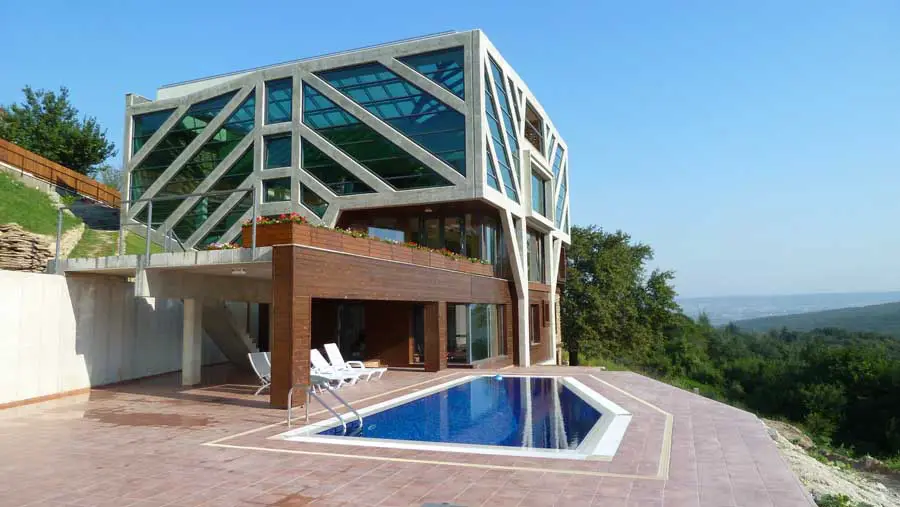
Photo © P. Yanev
The Large Home Tree project attempts to rethink the upscale suburban mansion typology and provide a completely different alternative. The concept is based on the architectural interpretation of the structural integrity, thermal balance and site adaptability of local trees which are naturally refined and optimized for the given topography and climate. The goal is to develop an efficient and tolerant to the surroundings architecture without being sentimental or apologetic.
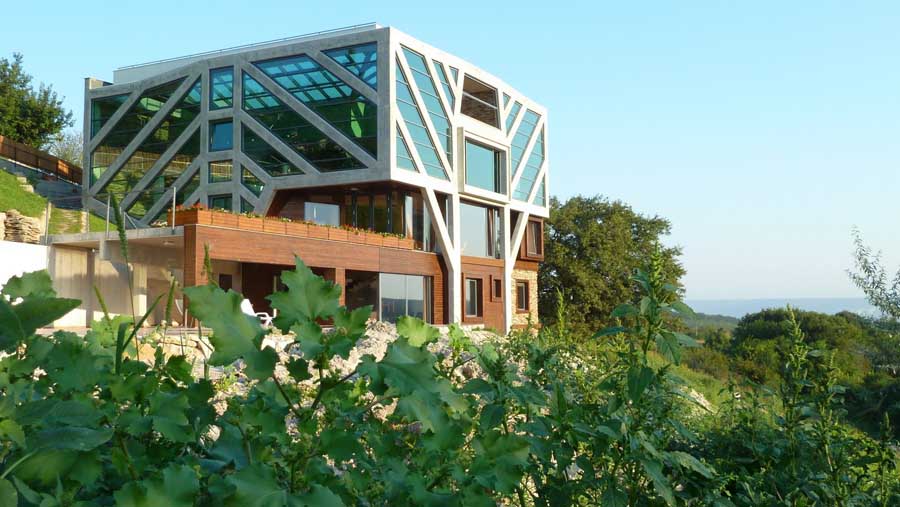
Photo © P. Yanev
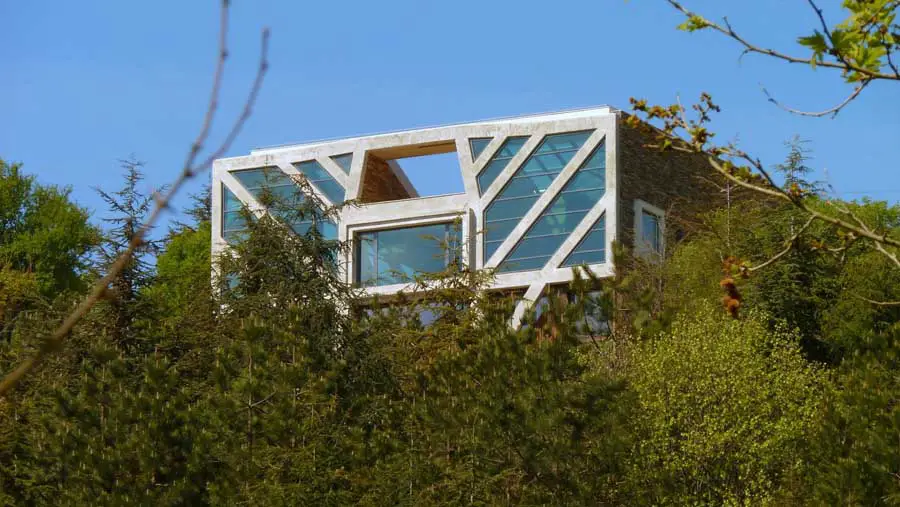
Photo © P. Yanev
The required extensive program of a large suburban residence with a winter garden had been compacted and subordinated to the greater idea of reducing site and carbon footprints. Placing the interior garden on top of the residential quarters for catching maximum sunlight initiated the tree analogy which in turn was further developed structurally and thermodynamically. The resulting architectural image had been intentionally left rough and unrefined in order to keep its conceptual power and avoid irrelevant to its performance beautification.
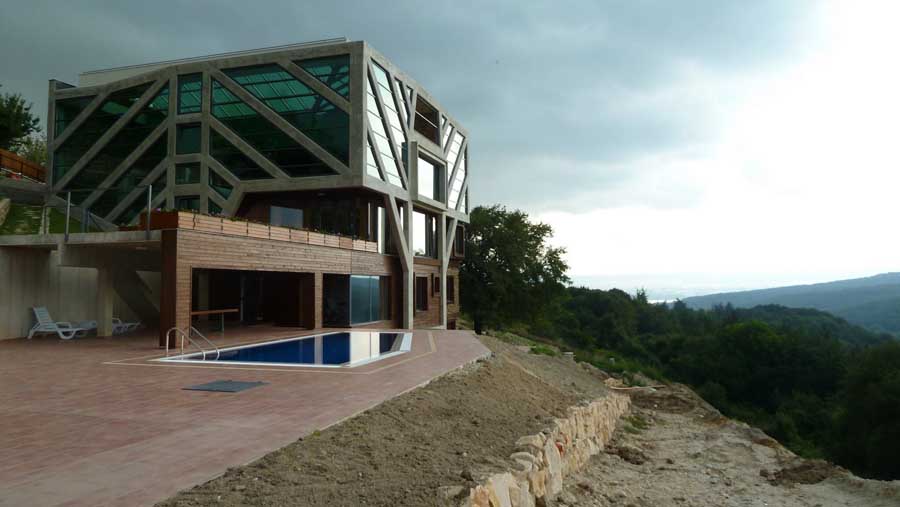
Photo © P. Yanev
FEATURES AND PERFORMANCE
Location: Rural
Site: Steep, eastward sloping, former sand quarry.
Vistas: Forest to the East and South (main), distant lake views to the North (secondary), West blocked by slope.
Purpose: Single family house. Functional scheme:
Three levels with central stair and accessible elevator. Dining, kitchen, three bedrooms, three bathrooms, support spaces on lower level; living, library, office, master bedroom, master bathroom, support spaces on middle level; interior garden, bathroom, support spaces on upper level.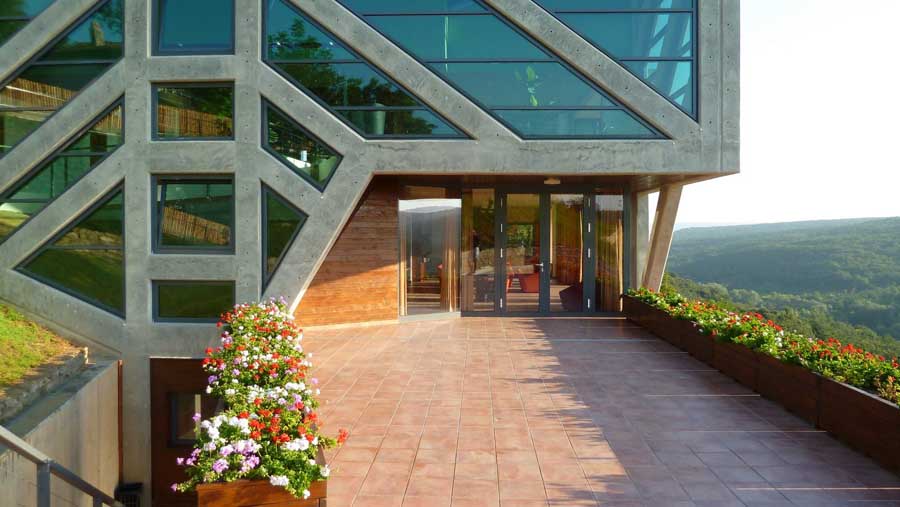
Photo © P. Yanev
Structure:
Cast in place reinforced concrete comprising stem-like central elevator core and facade load-bearing frames without intermediate columns. Diagonals, verticals and horizontals on the South and East facades follow the stress lines derived from the structural analysis of the building mass. Structure becomes major architectural feature, providing efficient load bearing and maximum transparency and flexibility in planning.
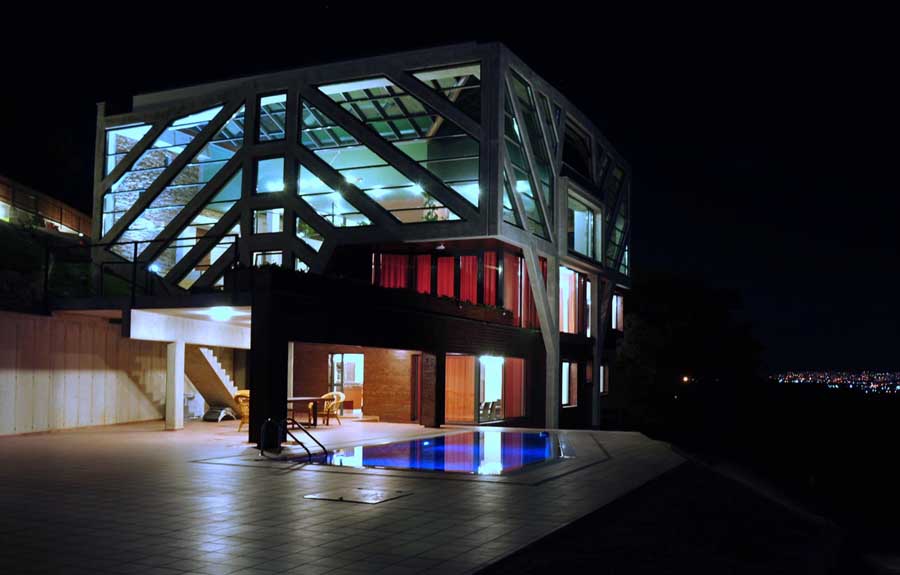
Photo © P. Yanev
Sustainable performance:
Large glazed interior garden (tree crown) planted with a variety of grasses, herbs and spices produces oxygen and useful biomass. It balances the climate and improves the air quality of the entire house. In summer natural cross-ventilation combined with evaporation from interior water fountain and rapid growth of plants dissipates solar heat gain and provides cooling effect to the residential spaces below. In winter the garden works as an insulating hat for the house by catching sun and tempering the air via its liquid-heated floor. All additional energy needed for heating and cooling the house in extreme conditions is supplied by heat exchange from the ground via six 100-meter deep closed loop geothermal probes (roots). In spring and autumn extracted from the ground temperature is sufficient to cover the occupational needs. In summer and winter the energy is further transformed by a highly efficient liquid-liquid heat pump and distributed to all levels via radiant floors. Solar vacuum tubes supply domestic hot water further reducing building’s CO2 emissions. Inversed roof funnels rainwater to a collection tank for irrigation of the garden. Residential spaces are accommodated under the interior garden and benefit from the winter garden’s insulating effect. All domestic wastewater is recycled on site through a 3-stage purification station producing bio-compost and gray water for the exterior landscaping. Sustainable performance of the building is complemented with energy efficient appliances and lighting. 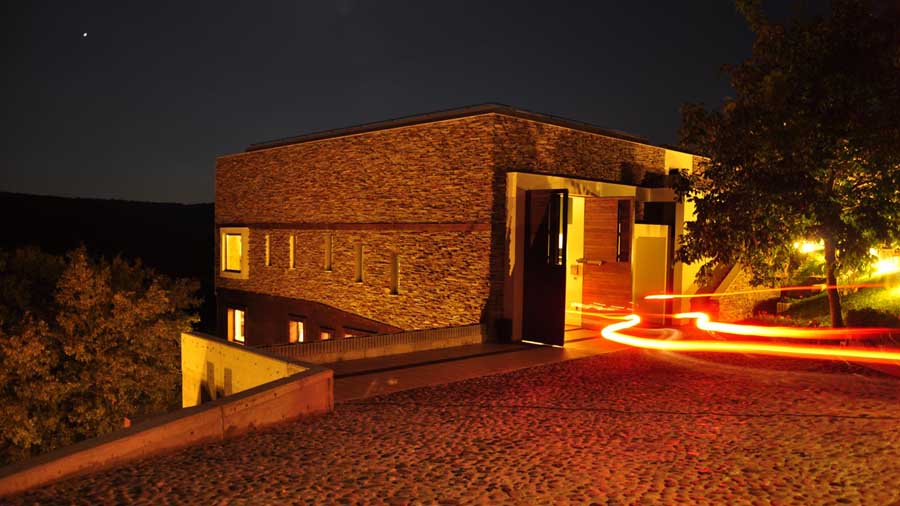
Photo © P. Yanev
Materiality:
Experimental nature of the project mandated strict cost management. Locally available inexpensive materials like concrete, stone and pine wood were specified in order to afford other important performance systems like insulated glass envelope, geothermal heat exchanger and radiant floors. All construction work was performed with local labor minimizing cost and pollution from transportation. 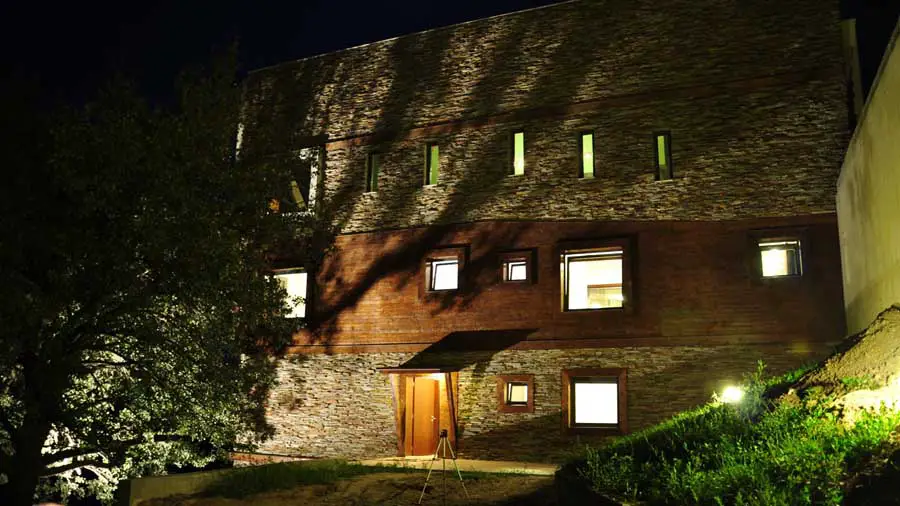
Photo © P. Yanev
Interiors:
Furniture and lighting are integral to architecture and built locally, except for seating.
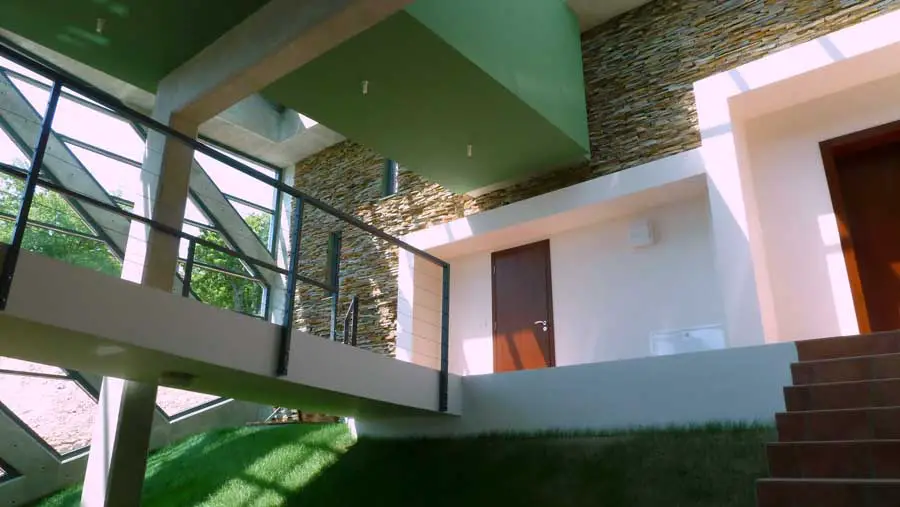
Photo © P. Yanev
Landscaping:
All existing trees are preserved and site surface is restored to its original condition. No alien species are introduced in order to allow re-growth and healing of local ecosystem facilitated by fertilization with bio-compost from a local farm. Purposeful avoidance of cultivation preserves local microclimate, greatly reduces water and energy consumption and eliminates capital and maintenance costs of landscaping.
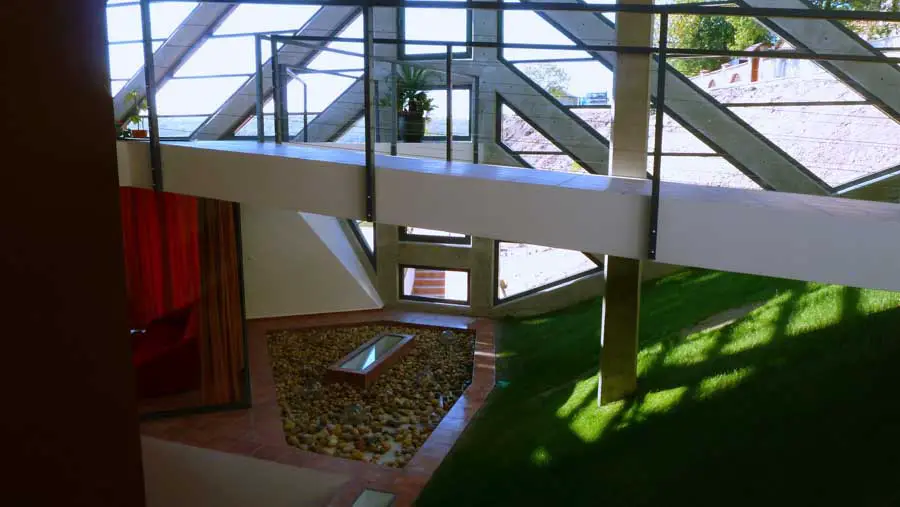
Photo © P. Yanev
The formulation of the Home Tree concept and its realization indicate the need and show the possibility of building sensible contemporary architecture using local forces and means. We believe that the idea of developing nature-tolerant architecture will gain more supporters among architects and investors with the current development of affordable sustainable technologies.
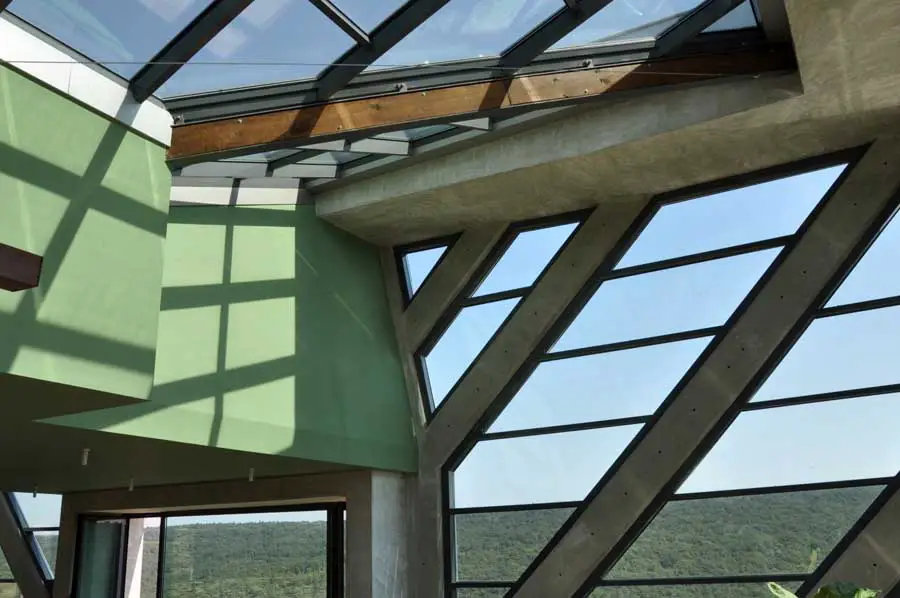
Photo © P. Yanev
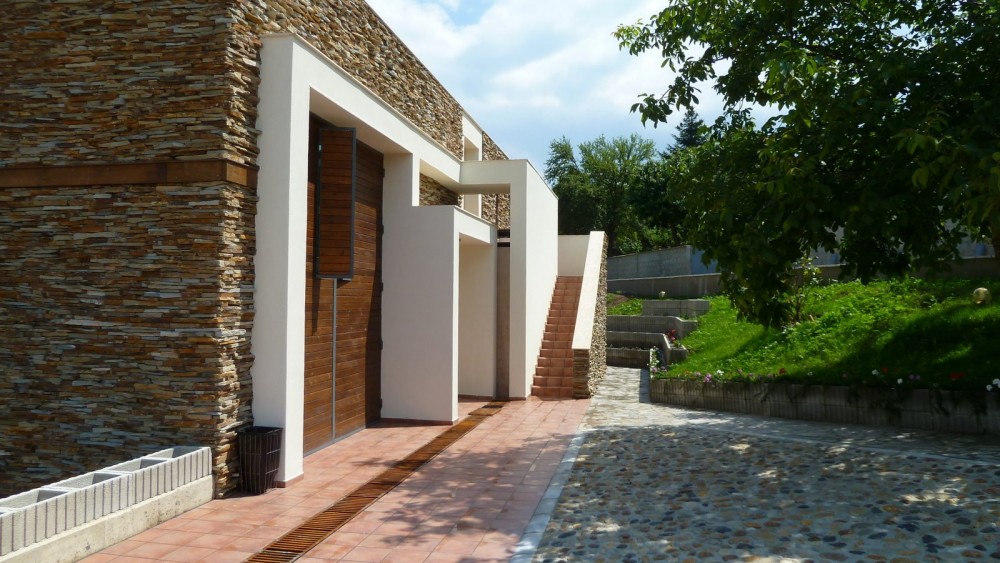
Photo © Courtesy of Ignatov Architects
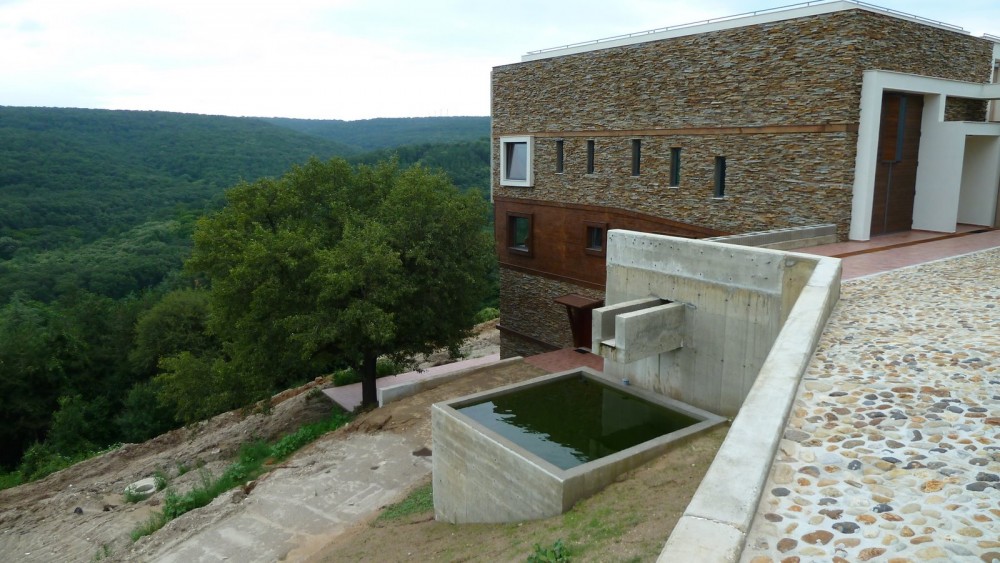
Photo © Courtesy of Ignatov Architects
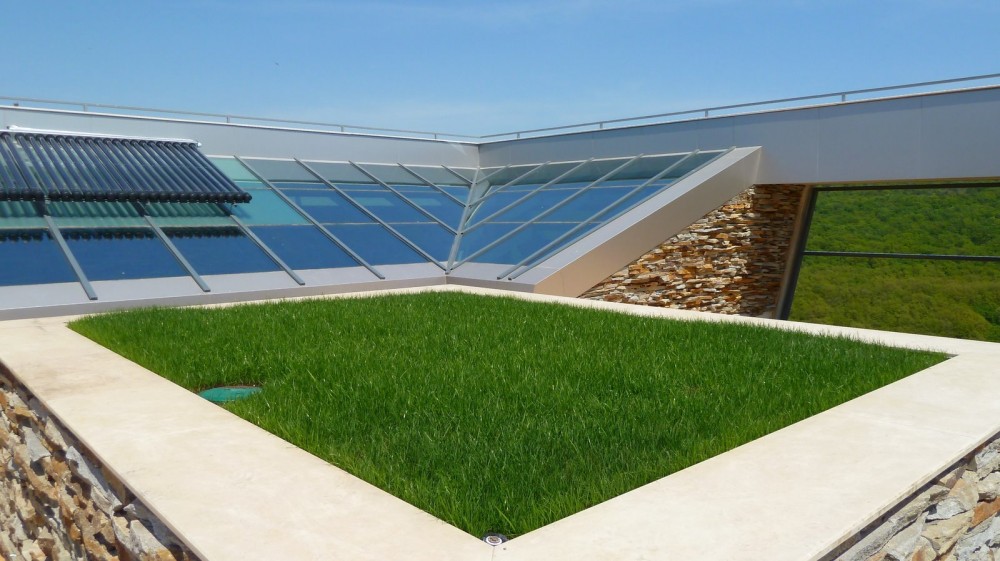
Photo © Courtesy of Ignatov Architects
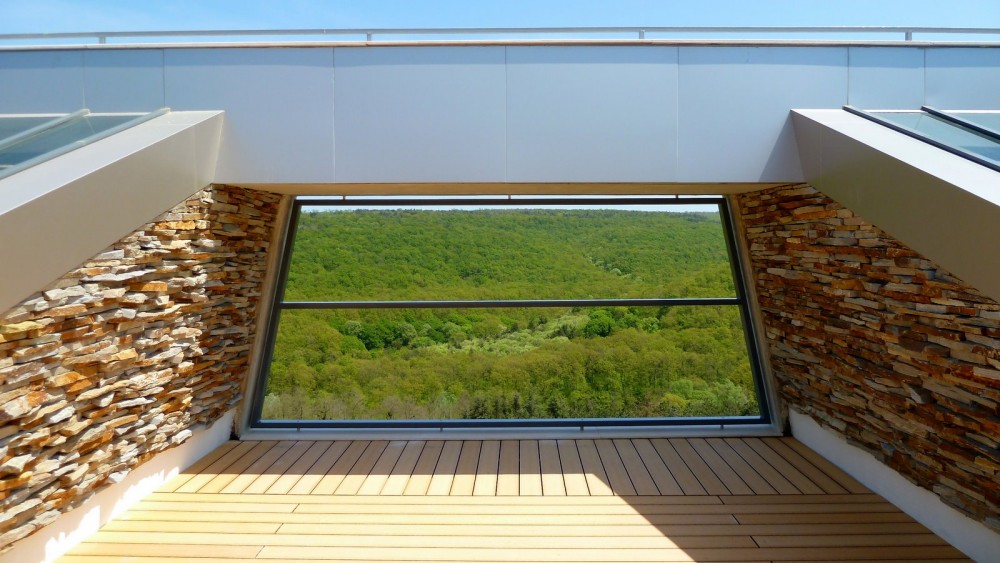
Photo © Courtesy of Ignatov Architects
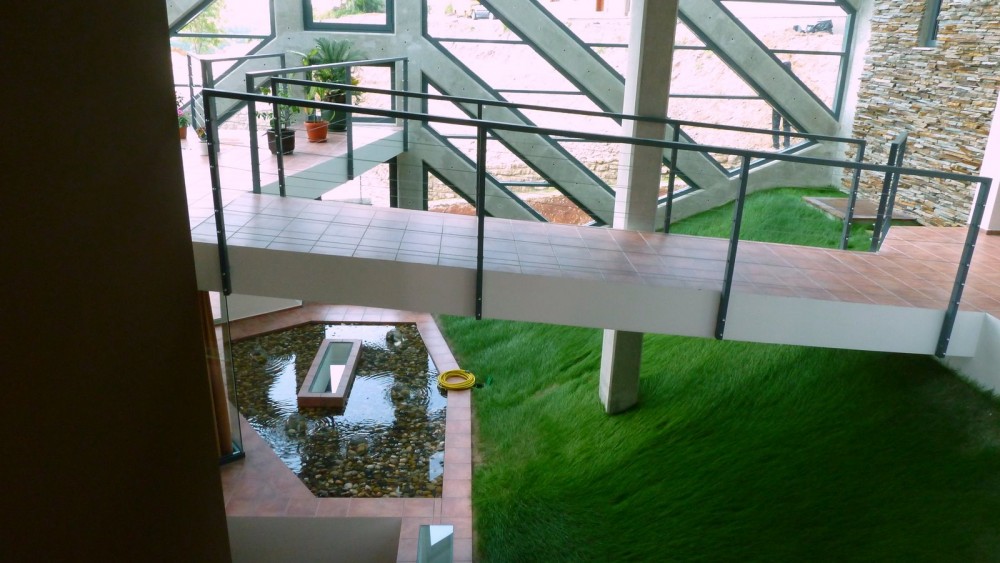
Photo © Courtesy of Ignatov Architects
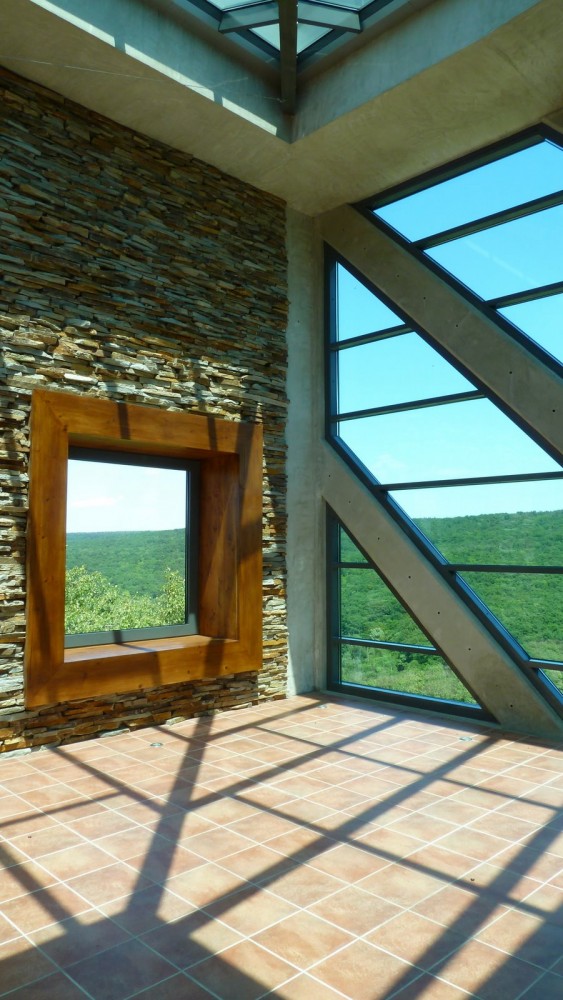
Photo © Courtesy of Ignatov Architects
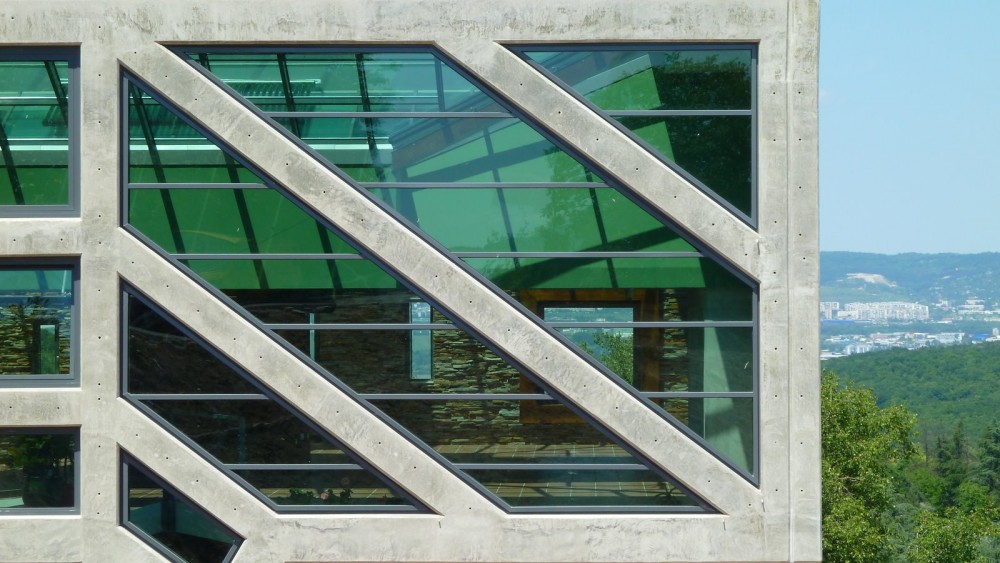
Photo © Courtesy of Ignatov Architects
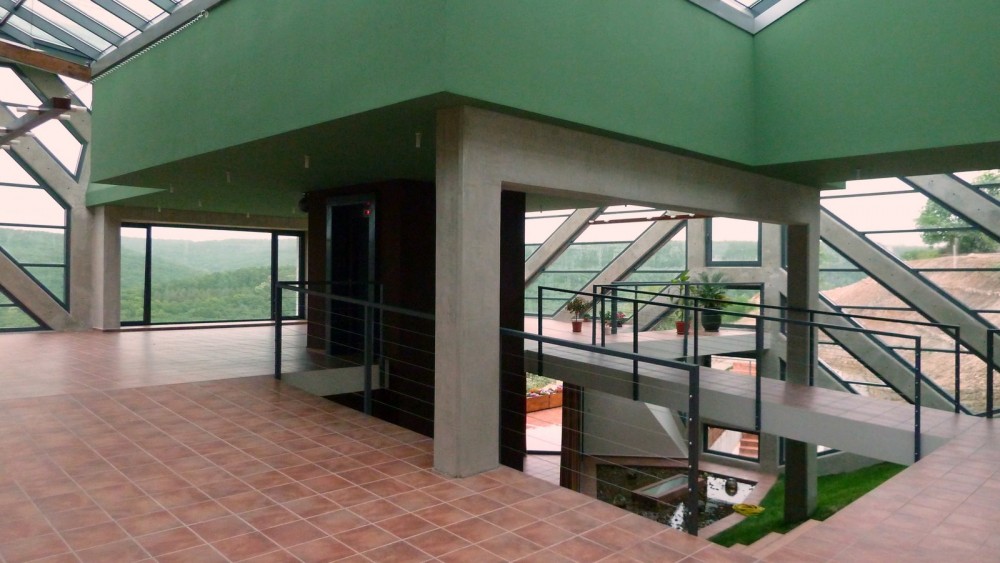
Photo © Courtesy of Ignatov Architects
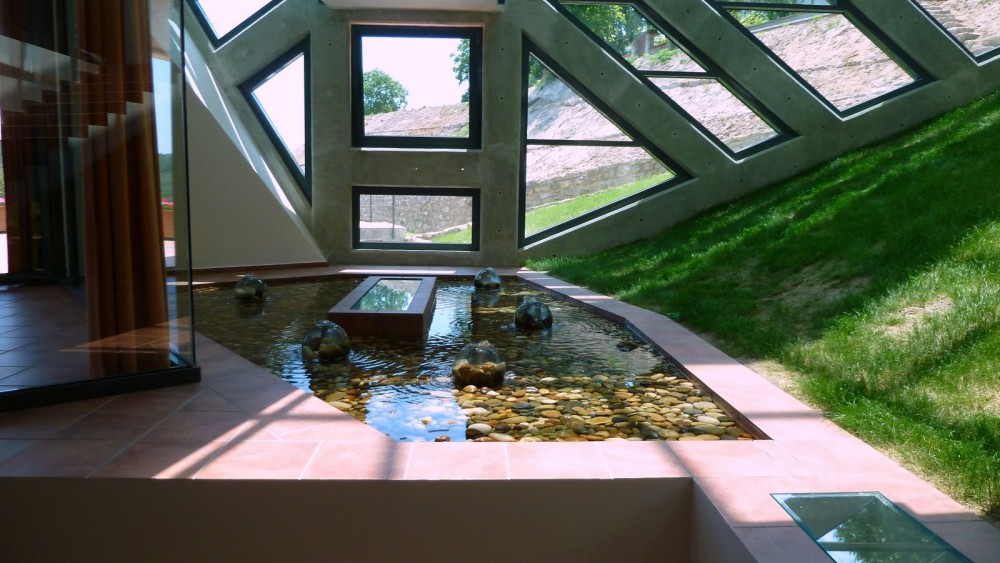
Photo © Courtesy of Ignatov Architects
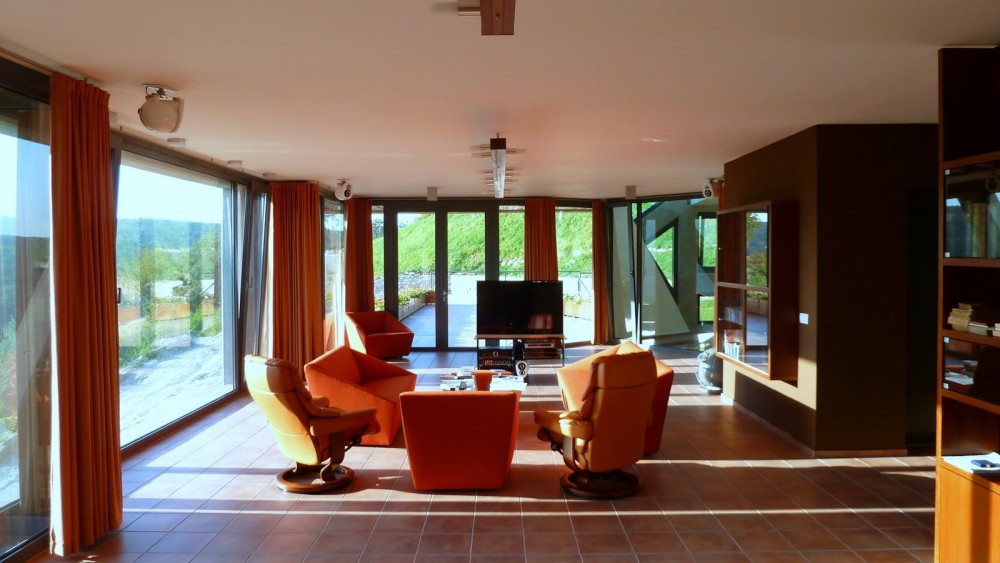
Photo © Courtesy of Ignatov Architects
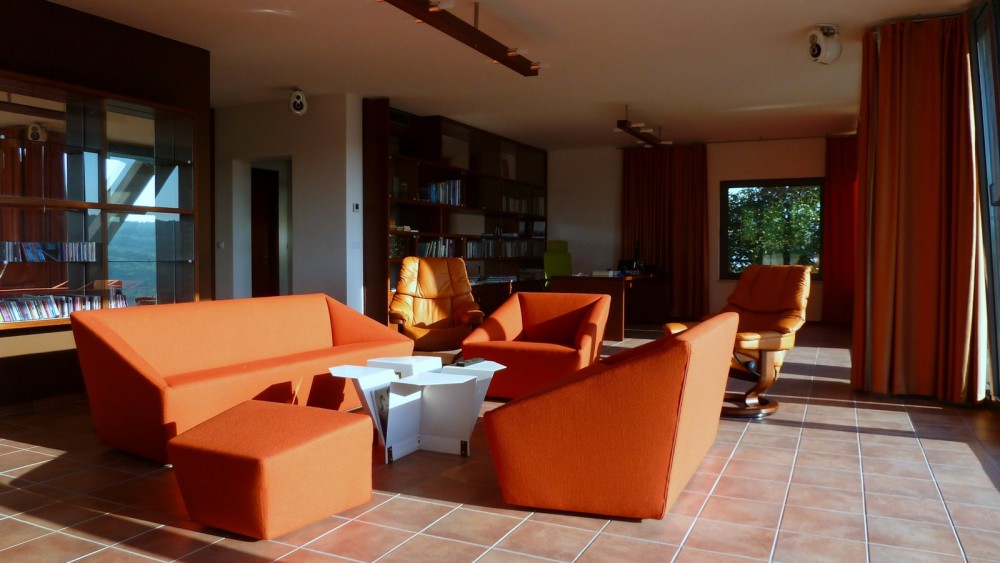
Photo © Courtesy of Ignatov Architects
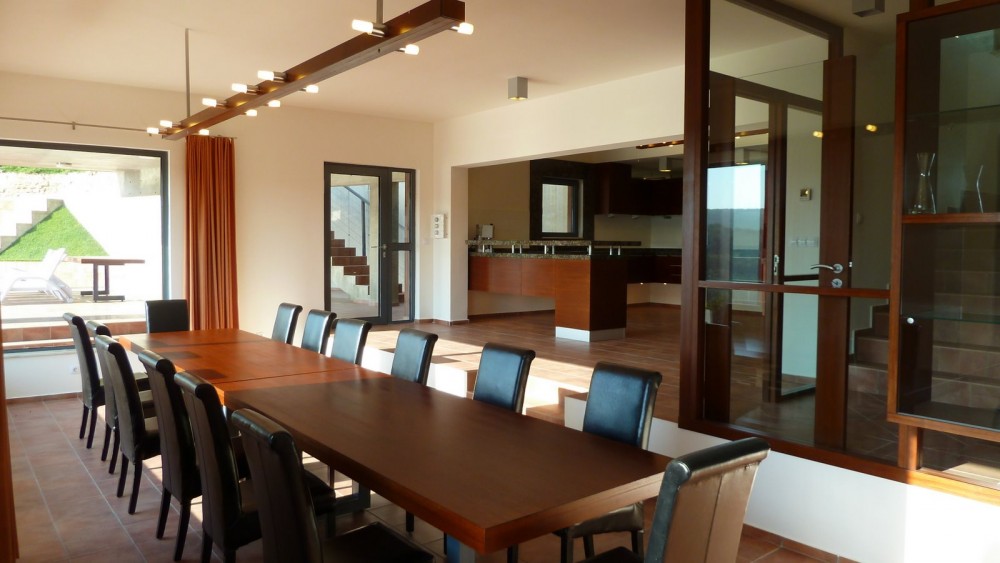
Photo © Courtesy of Ignatov Architects
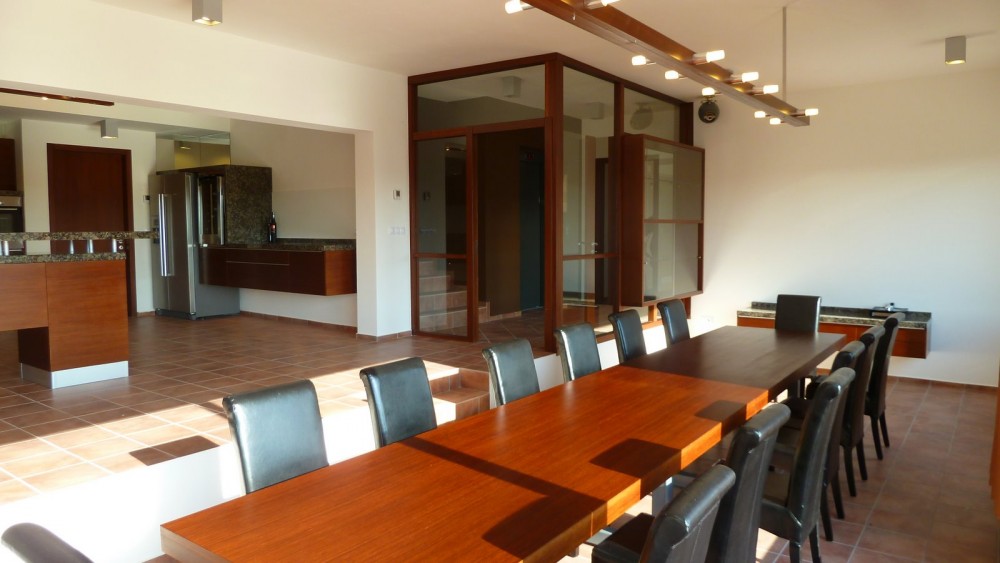
Photo © Courtesy of Ignatov Architects
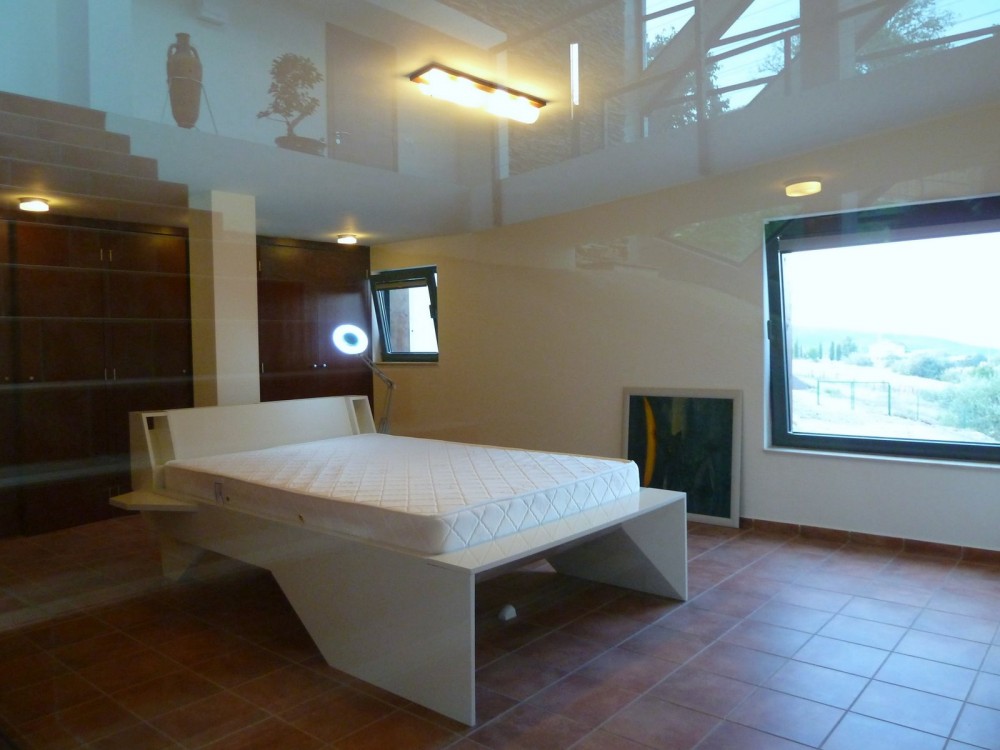
Photo © Courtesy of Ignatov Architects
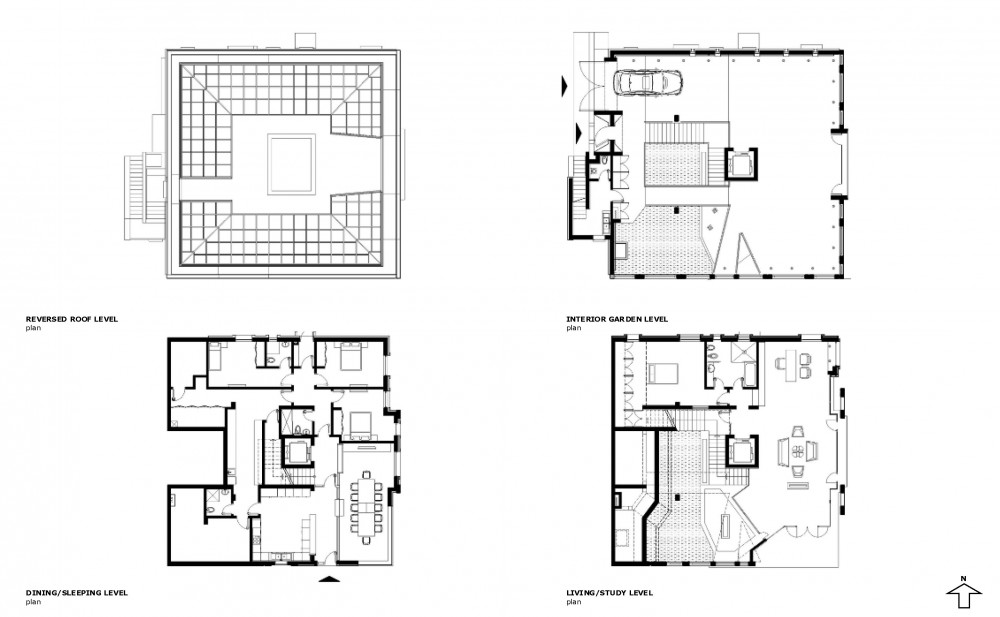 floor plans--drawing Courtesy of Ignatov Architects
floor plans--drawing Courtesy of Ignatov Architects 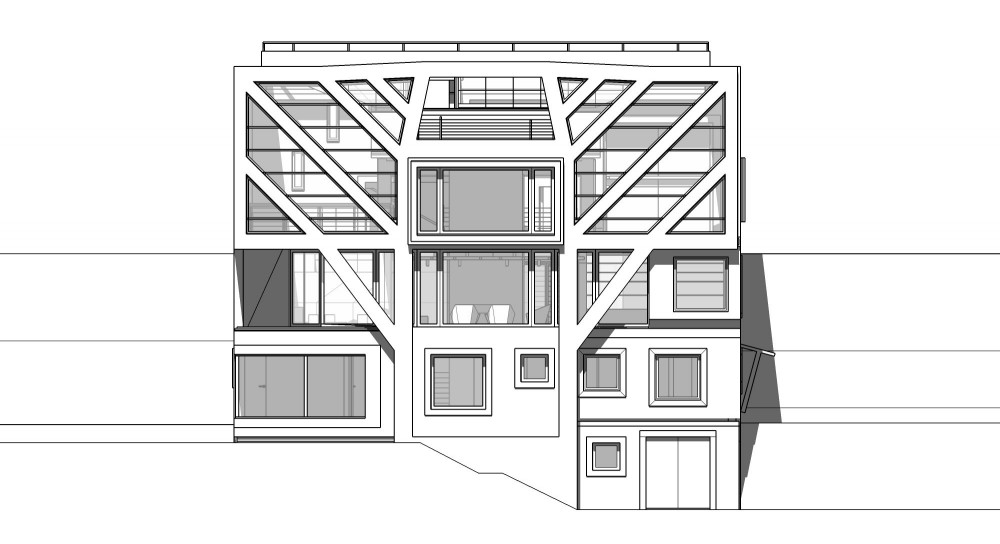 east elevation--drawing Courtesy of Ignatov Architects
east elevation--drawing Courtesy of Ignatov Architects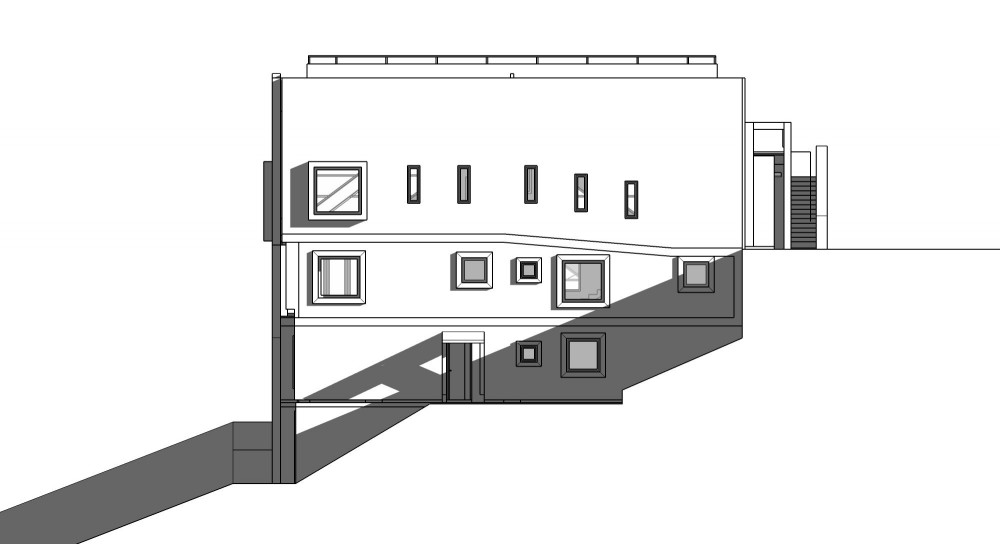 north elevation--drawing Courtesy of Ignatov Architects
north elevation--drawing Courtesy of Ignatov Architects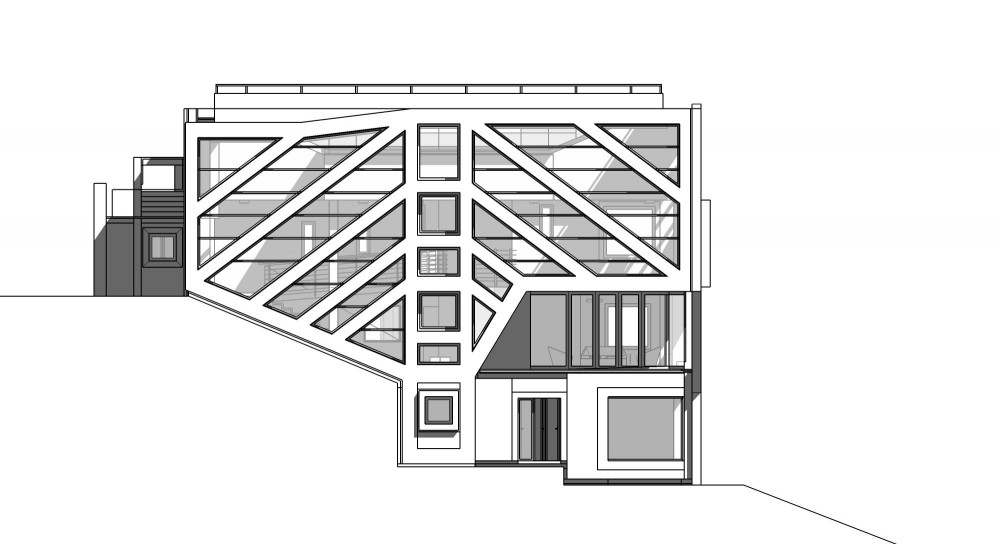 south elevation--drawing Courtesy of Ignatov Architects
south elevation--drawing Courtesy of Ignatov Architects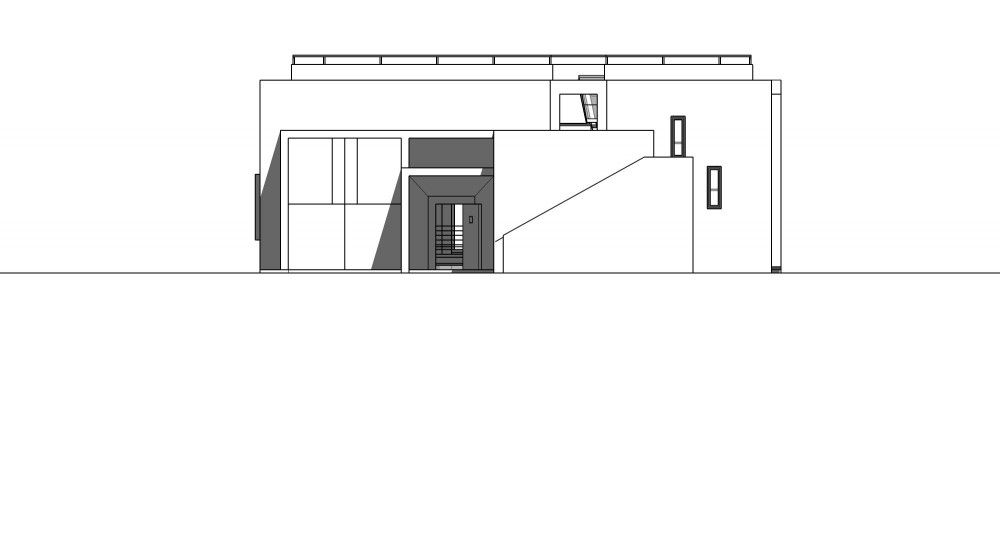 west elevation--drawing Courtesy of Ignatov Architects
west elevation--drawing Courtesy of Ignatov Architects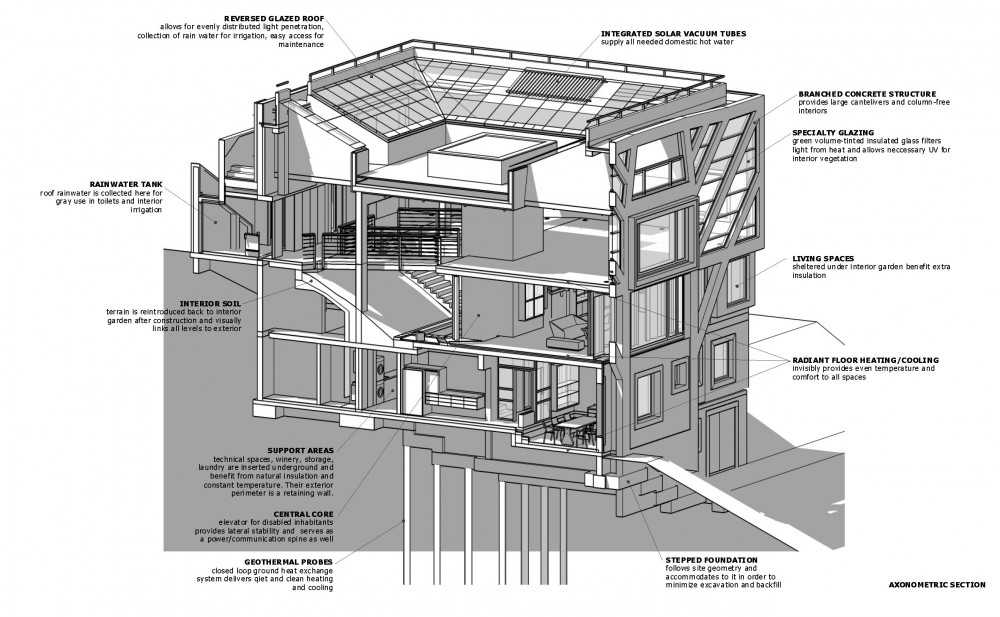 perspective section--drawing Courtesy of Ignatov Architects
perspective section--drawing Courtesy of Ignatov Architects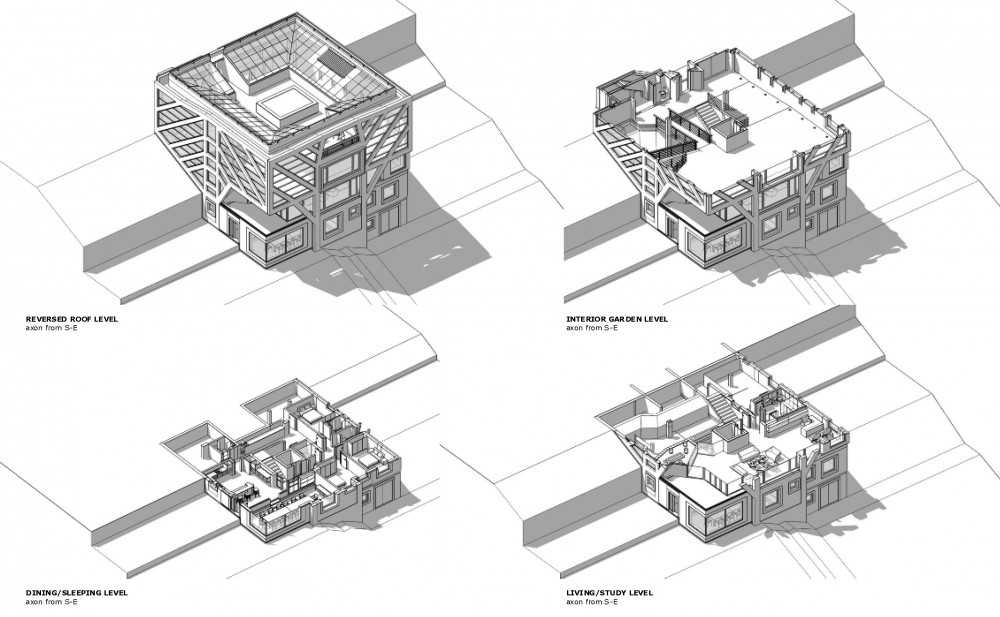 axo--drawing Courtesy of Ignatov Architects
axo--drawing Courtesy of Ignatov Architects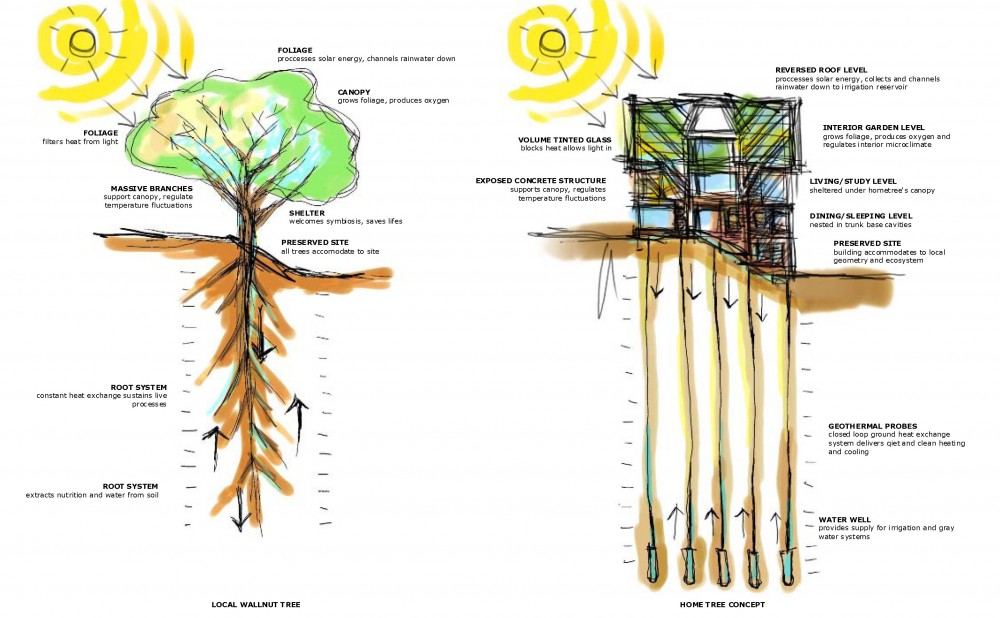 concept diagrams--drawing Courtesy of Ignatov Architects
concept diagrams--drawing Courtesy of Ignatov Architects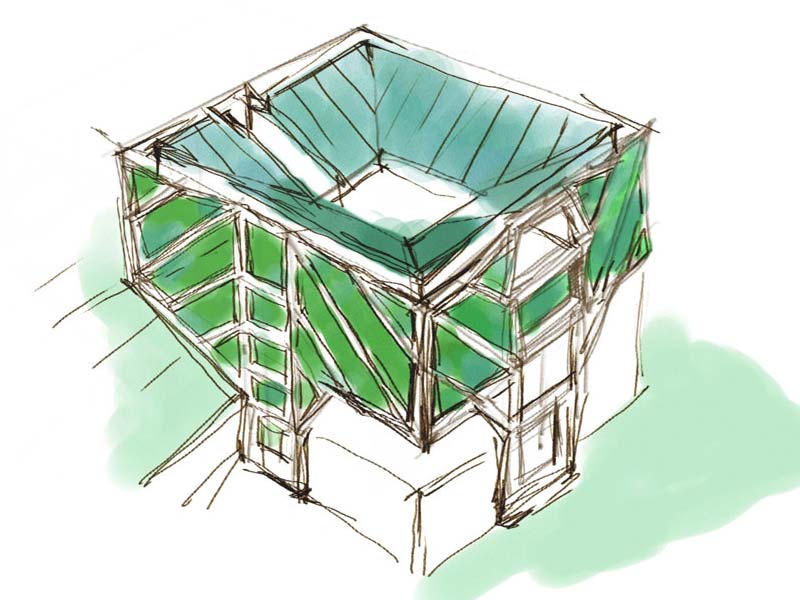 sketch--drawing Courtesy of Ignatov Architects
sketch--drawing Courtesy of Ignatov ArchitectsThe people
Architects: Ignatov Architects
Location: Varna, Bulgaria
Client: George Bonin
Project Area: 780 sqm
Project Year: 2006-2010
Photographs: Courtesy of Ignatov Architects
Site area: 26 000 m2 (260 000 sf)
Building footprint: 260 m2 (2600 sf) (equals to 1% of site)
Budget: to be released at a later date
ABOUT Ignatov Architects
Ignatov Architects is a mobile architectural practice interested in finding inventive and effective solutions. The firm provides complete architectural services from site analysis to design and construction administration. We believe that meaningful architecture must be well-thought and specific to its purpose, location and users.
Currently Ignatov Architects works on a couple experimental residential projects in Eastern Europe.
The company was established by Mr. Boris Ignatov in 2004 in New York and has offices in Manhattan and Varna, Bulgaria. Mr. Ignatov holds Master degrees in architecture from Columbia University in New York (2006) and Sofia University of Architecture (1995). He has worked for several large architectural firms including "Perkins + Will Architects" and is a licensed architect in the state of New York and Bulgaria. Currently Ignatov Architects works on a couple experimental residential projects in Eastern Europe.
via:e-architect/archdialy
